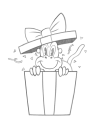Anatomy of the Human Body
Torso(163 Lessons )
Arms(101 Lessons )
Arm Bones
Hand Bones
Deltoids
Biceps
Triceps
Forearms
Hands
Legs(107 Lessons )
Give a gift
Give a gift card for art students to use on anything in the Proko store.
Or gift this course:

About instructor
Founder of Proko, artist and teacher of drawing, painting, and anatomy. I try to make my lessons fun and ultra packed with information.


















Assignment
When drawing the Forearm, start with the chicken drumstick. You want to start simple and establish all the big proportions and simple forms first. Find the block of the wrist and use it to establish the perspective of the arm. You should know in your head whether the arm is supinated or pronated, and where the ulna and radius are. Then you can draw the individual muscle groups. Get the rhythm of the ridge muscles as they wrap around the arm, from lateral epicondyle to thumb. Split up your chicken drumstick into the individual muscles if they’re visible, and add the tendons at the palm side of the wrist. As you add the individual muscles, try not to lose the large mass of the 3 muscle groups. There’s a hierarchy. Primary forms first, then secondary forms.